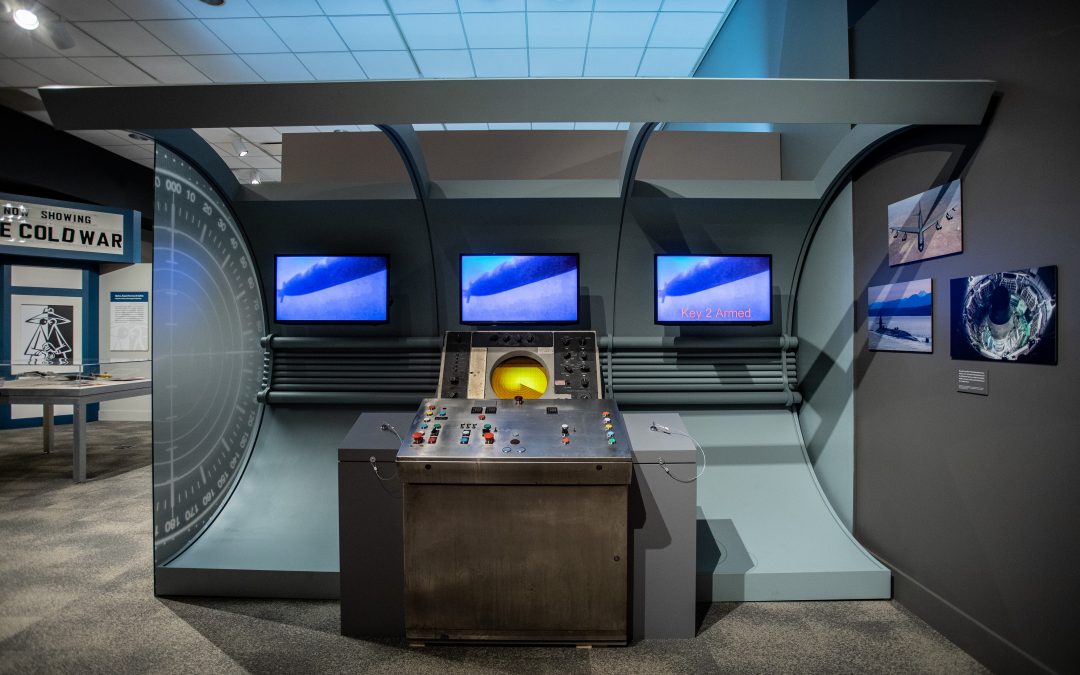3-2-1….Launch.
Cold War: Soviets, Spies and Secrets features a unique interactive experience that simulates the intensity of launching a ballistic missile. Visitors are able to stand at a submarine console, turn a key to arm the system and countdown as a missile test launches on the screen.
Authentic to a real missile system, it takes two keys operated by two different people to initiate a launch. This two-person rule provides an extra level of security ensuring no one person can go rogue and launch a missile on their own.
Operating deep under the surface of the ocean, ballistic missile submarines are equipped with technology that makes them almost impossible to locate. Their ability to hide made it highly unlikely they could be destroyed in a first strike. This provided a powerful disincentive for the Soviets to launch a nuclear attack, knowing that American submarines could respond with devastating force.
The U.S. Navy still operates ballistic missile submarines designed specifically for stealth and the precise delivery of nuclear warheads.
The Nuclear Triad: Preventing a First Strike
“Together, we share the capacity to destroy forever our common heritage of 4,000 years of civilization. Together, we are moving to insure that this will not-because it must not–happen.”
President Richard Nixon, June 5, 1974
One of the fundamental elements of America’s nuclear doctrine during the Cold War was to disperse its nuclear weapons among ground, air, and sea-based platforms – the Nuclear Triad. This ensured that America could retaliate if the Soviet Union launched a first strike against the United States.
During the Cold War the three legs of the Nuclear Triad formed “the backbone of America’s national security.” The three legs are:
- Land-based intercontinental ballistic missiles carrying multiple nuclear warheads located in hardened underground silos dispersed across the United States.
- Air Force bases around the country are stocked with nuclear bombs that could be dropped from American bombers on enemy targets.
- United States Navy ballistic missile submarines, once carrying as many as 192 nuclear warheads, that can launch their weapons from under the sea.
Ballistic missile submarines are the most survivable leg of the nuclear triad.
Often referred to as Mutually Assured Destruction – or MAD – the Nuclear Triad helped keep the Cold War from becoming a nuclear war.
Cold War: Soviets, Spies and Secrets is included with admission to the Nixon Library. The Nixon Library is open seven days a week from 10 AM to 5 PM.
Nixon Library admission is $25 for adults, $21 for seniors, $19 for high school and college students, $19 for retired military, active military are free, children 5-11 for $15 and children 4 and under are free.
Nixon Foundation Members enjoy complimentary admission to the exhibit as part of their membership benefits.

